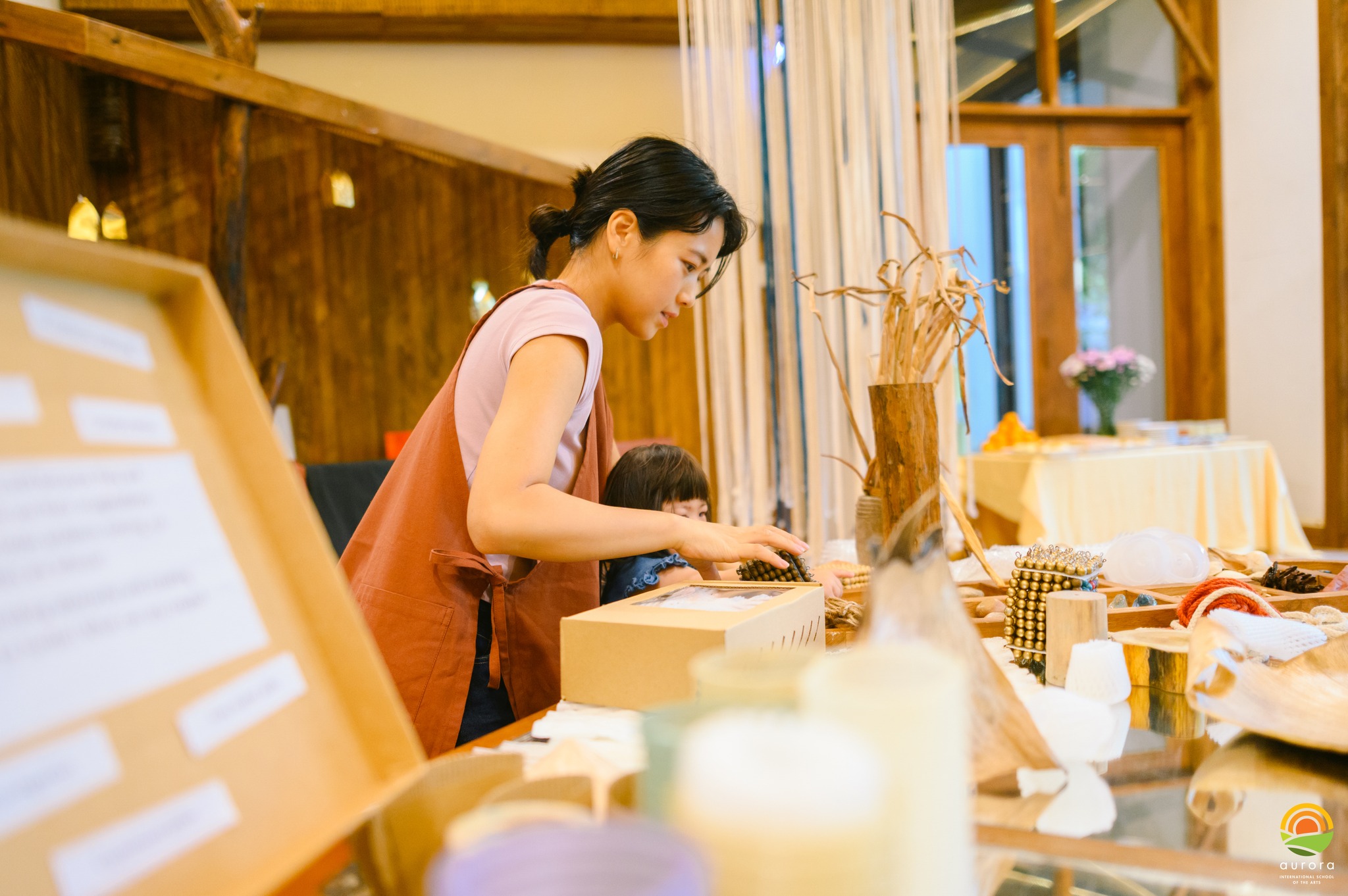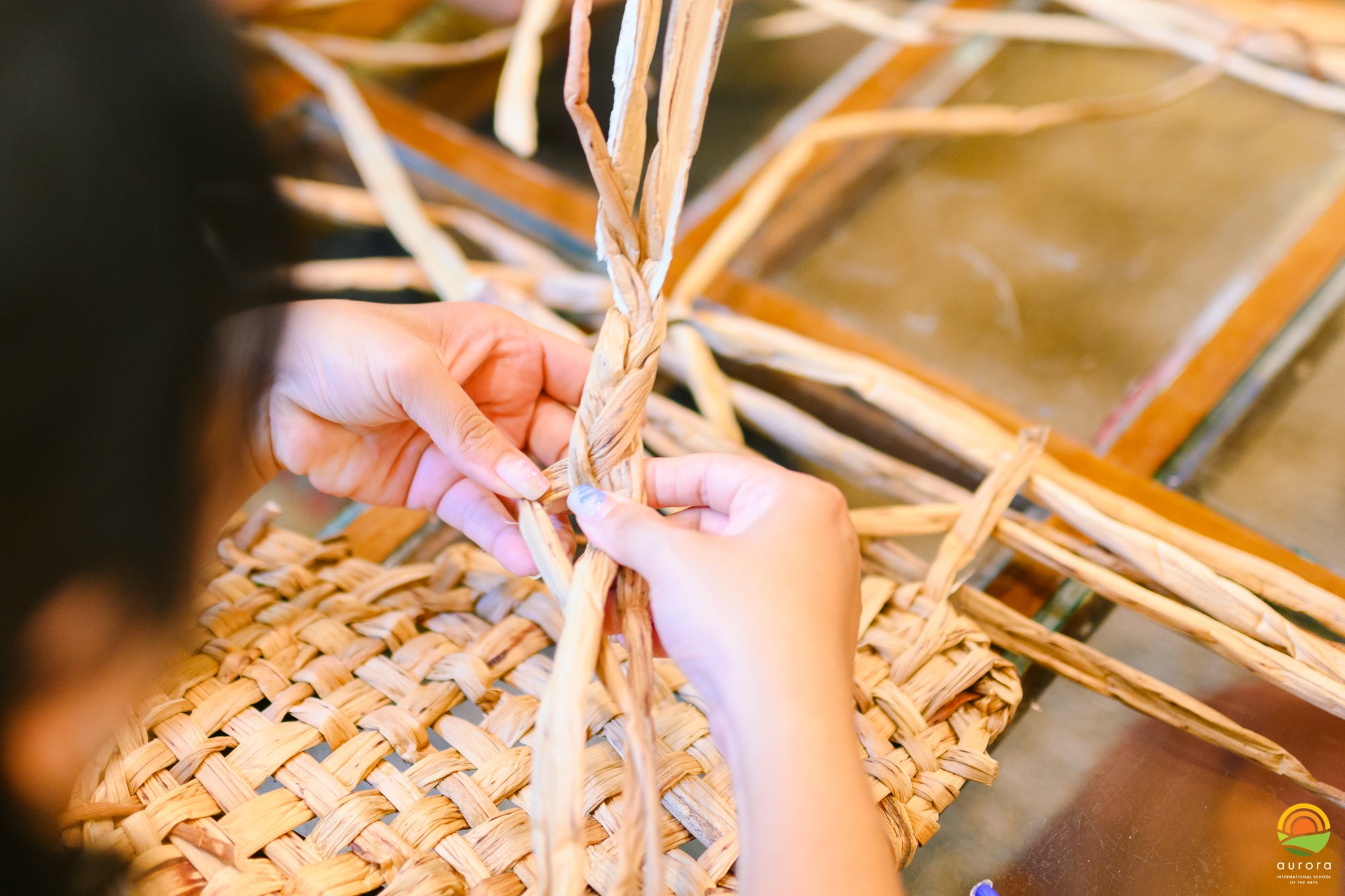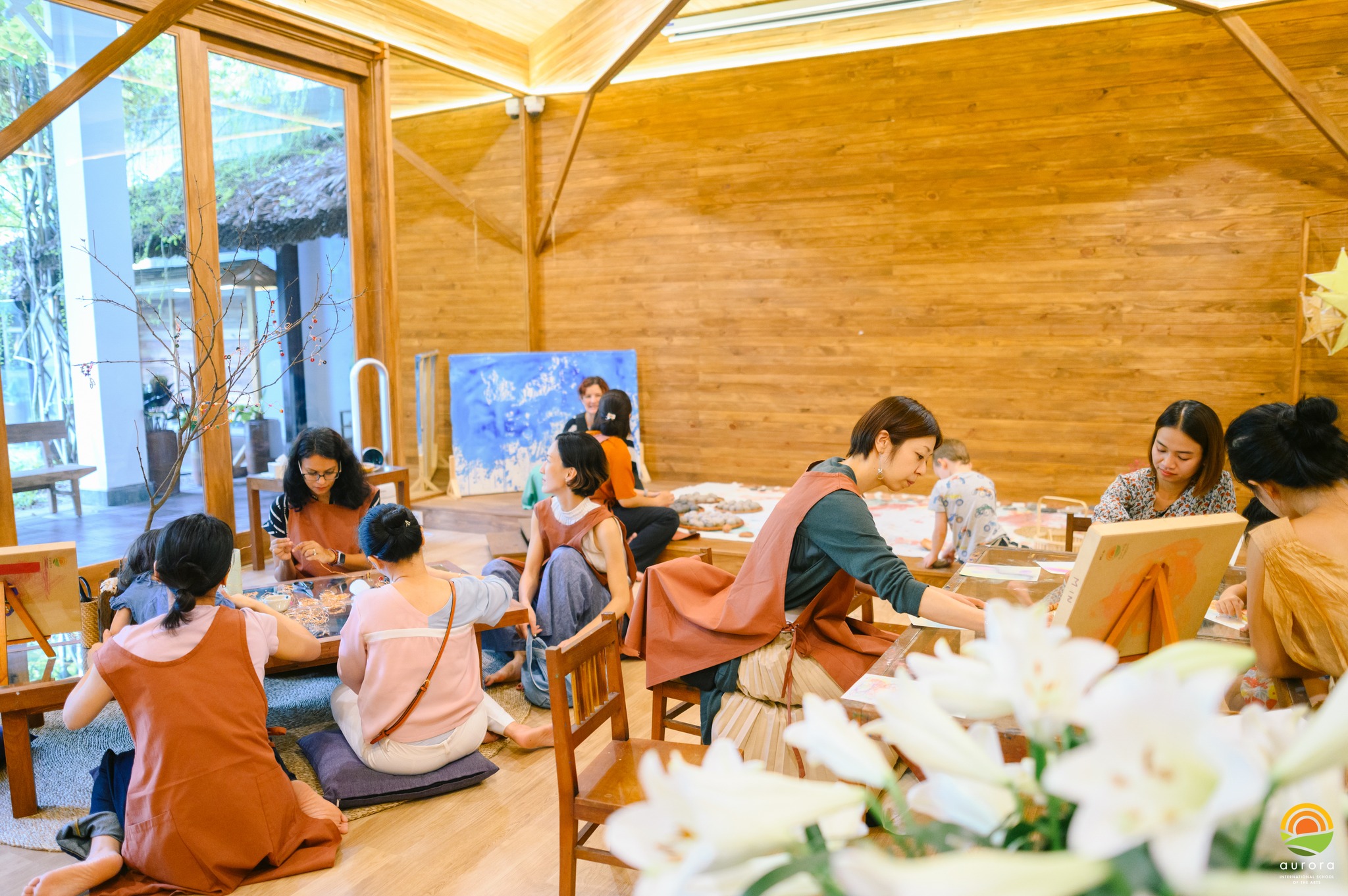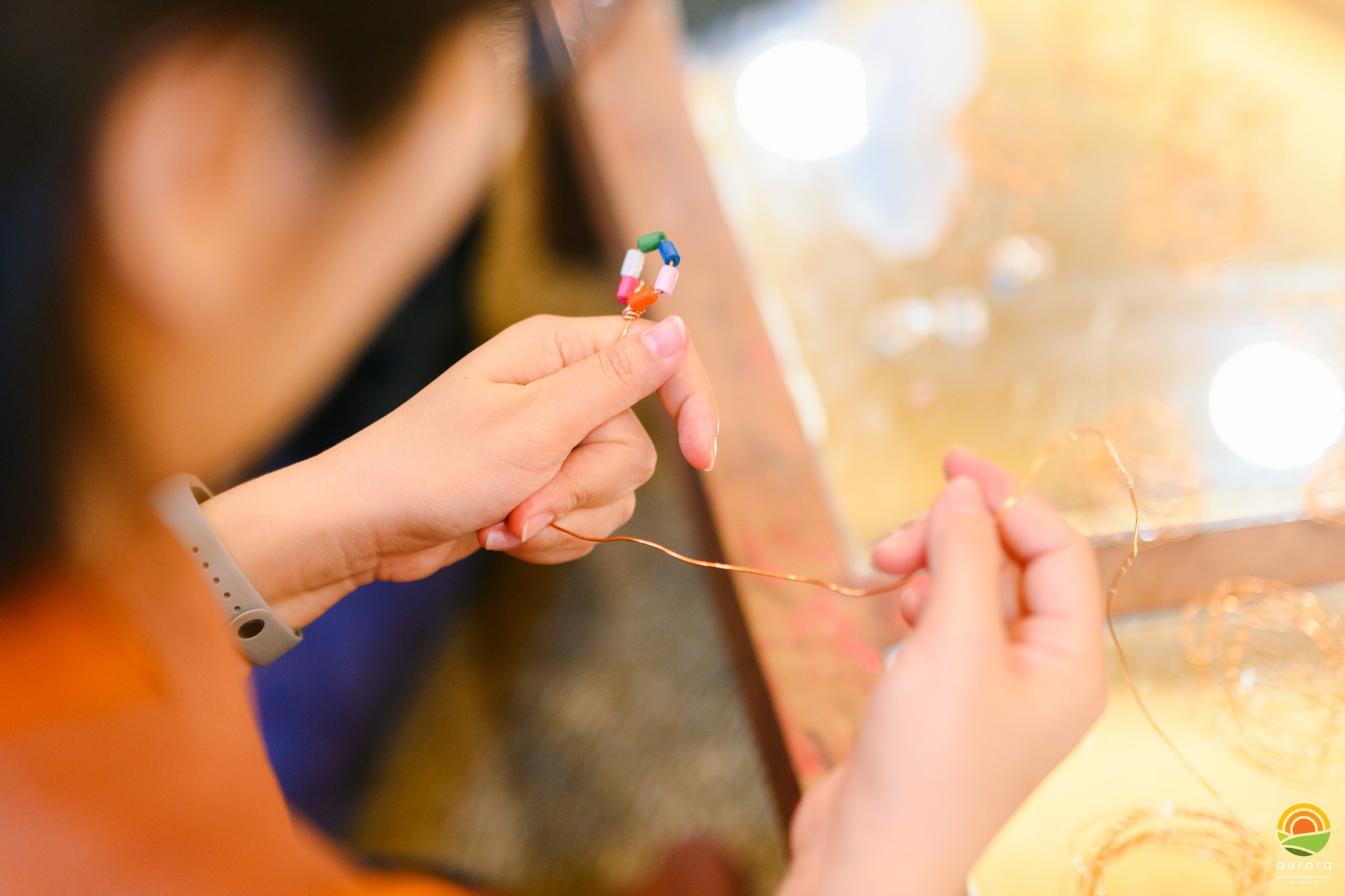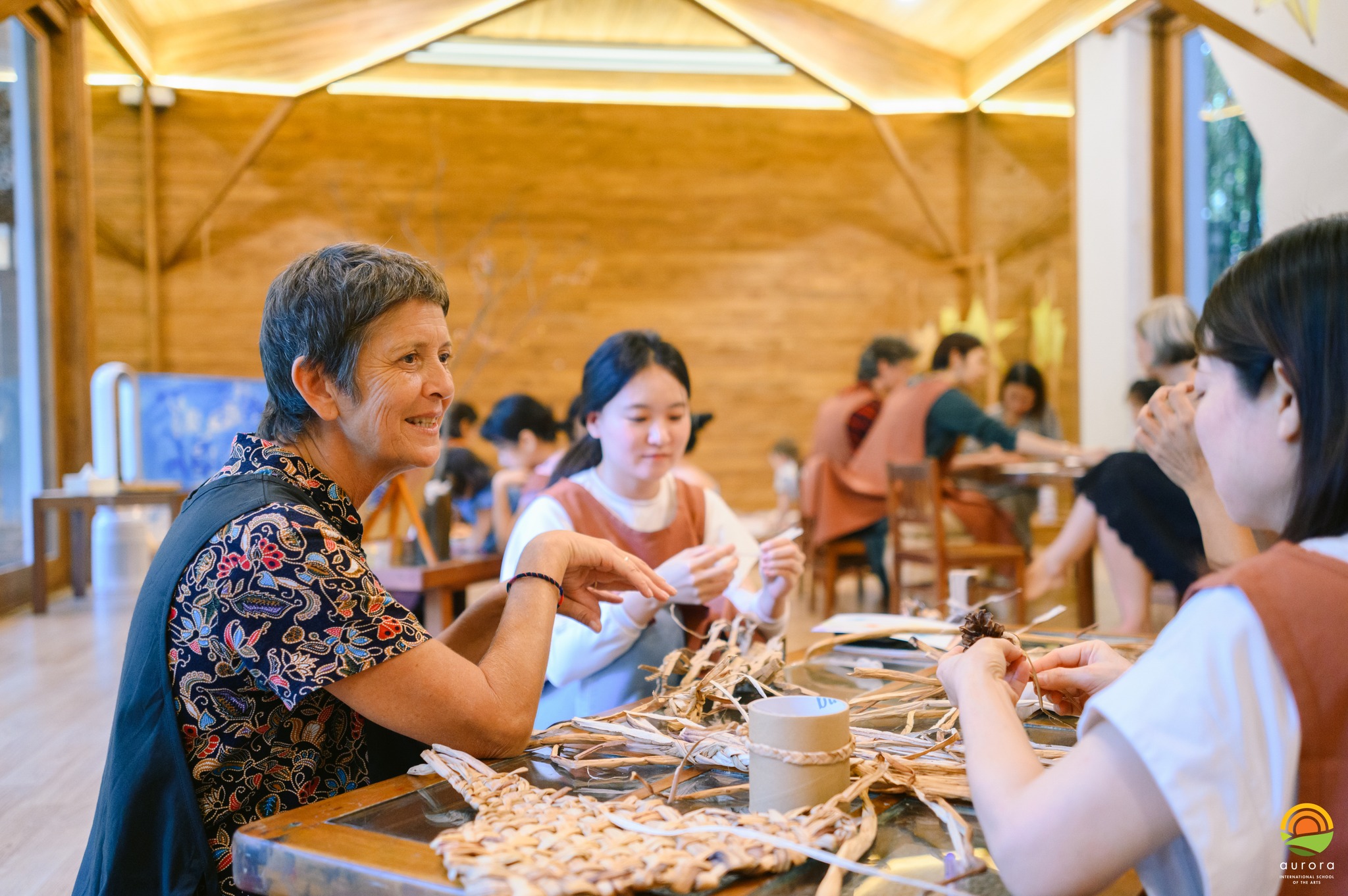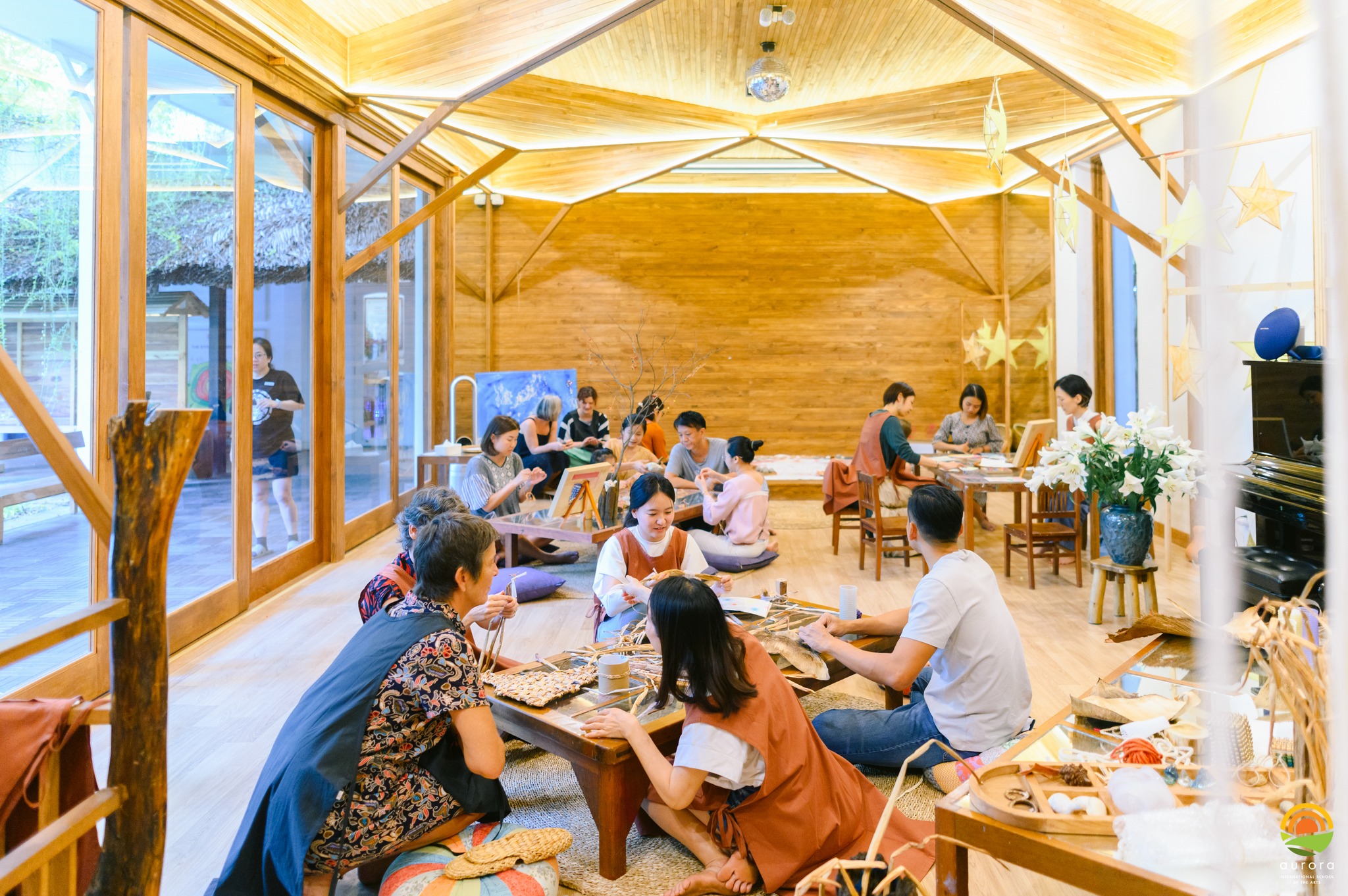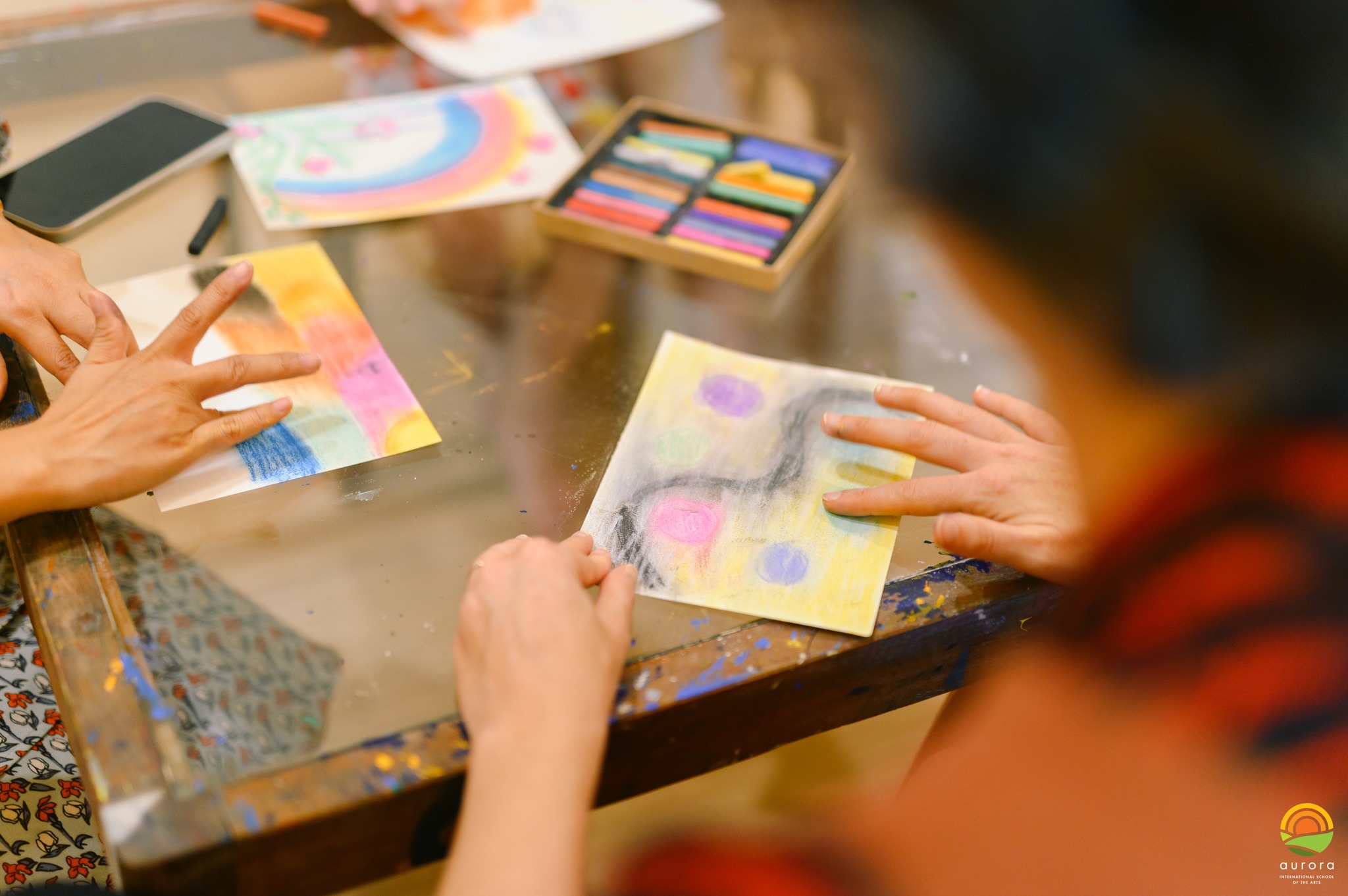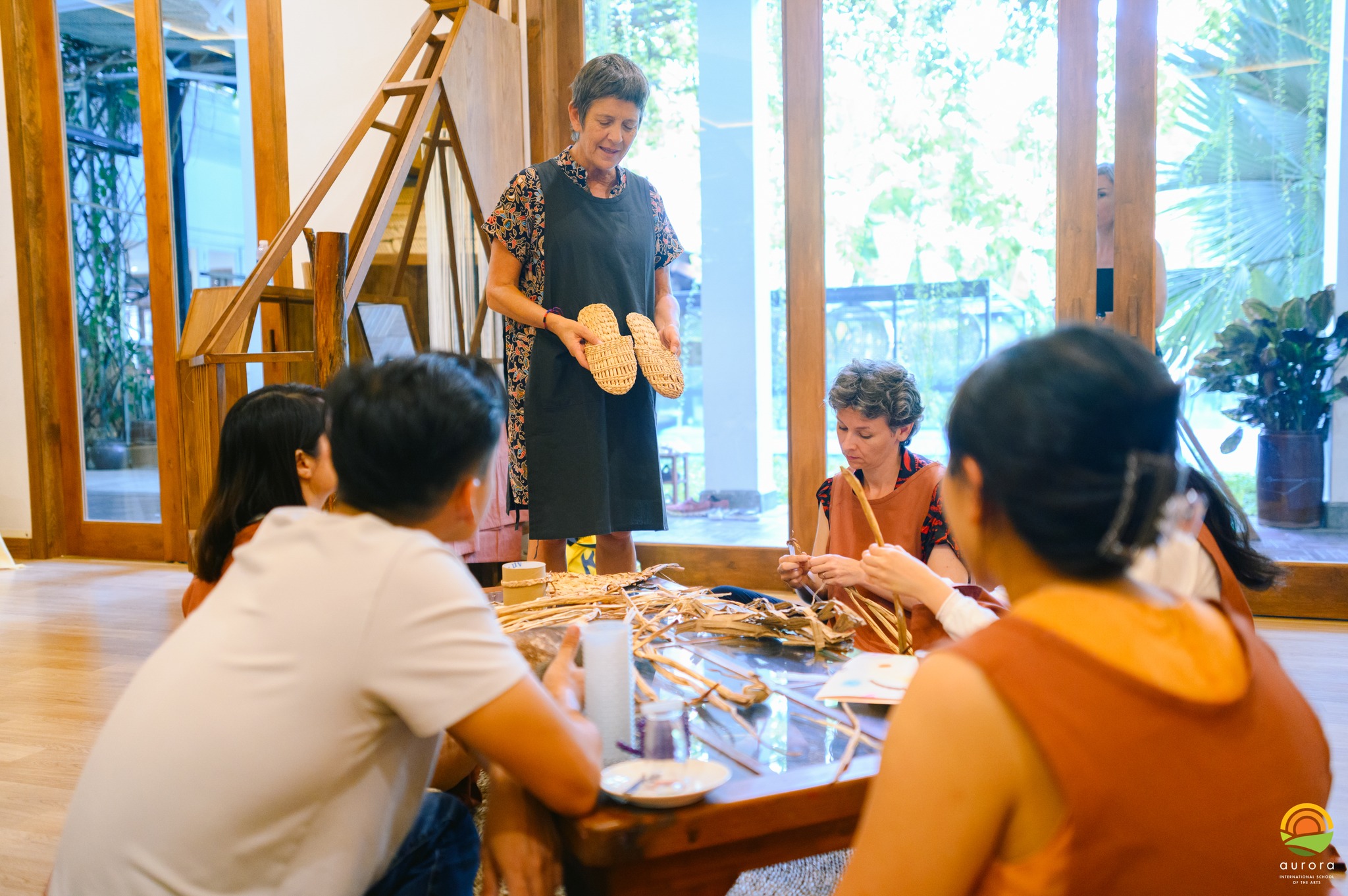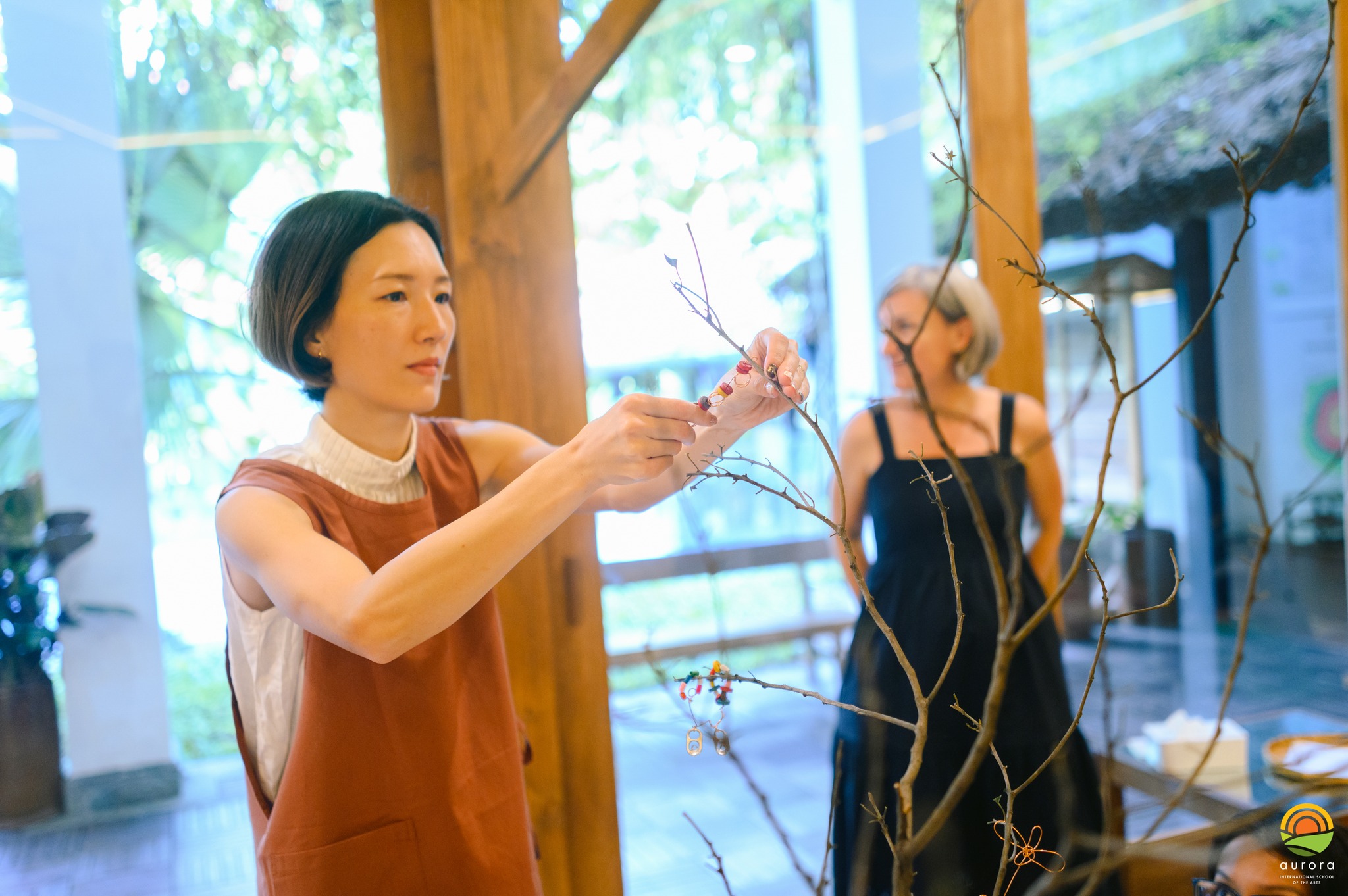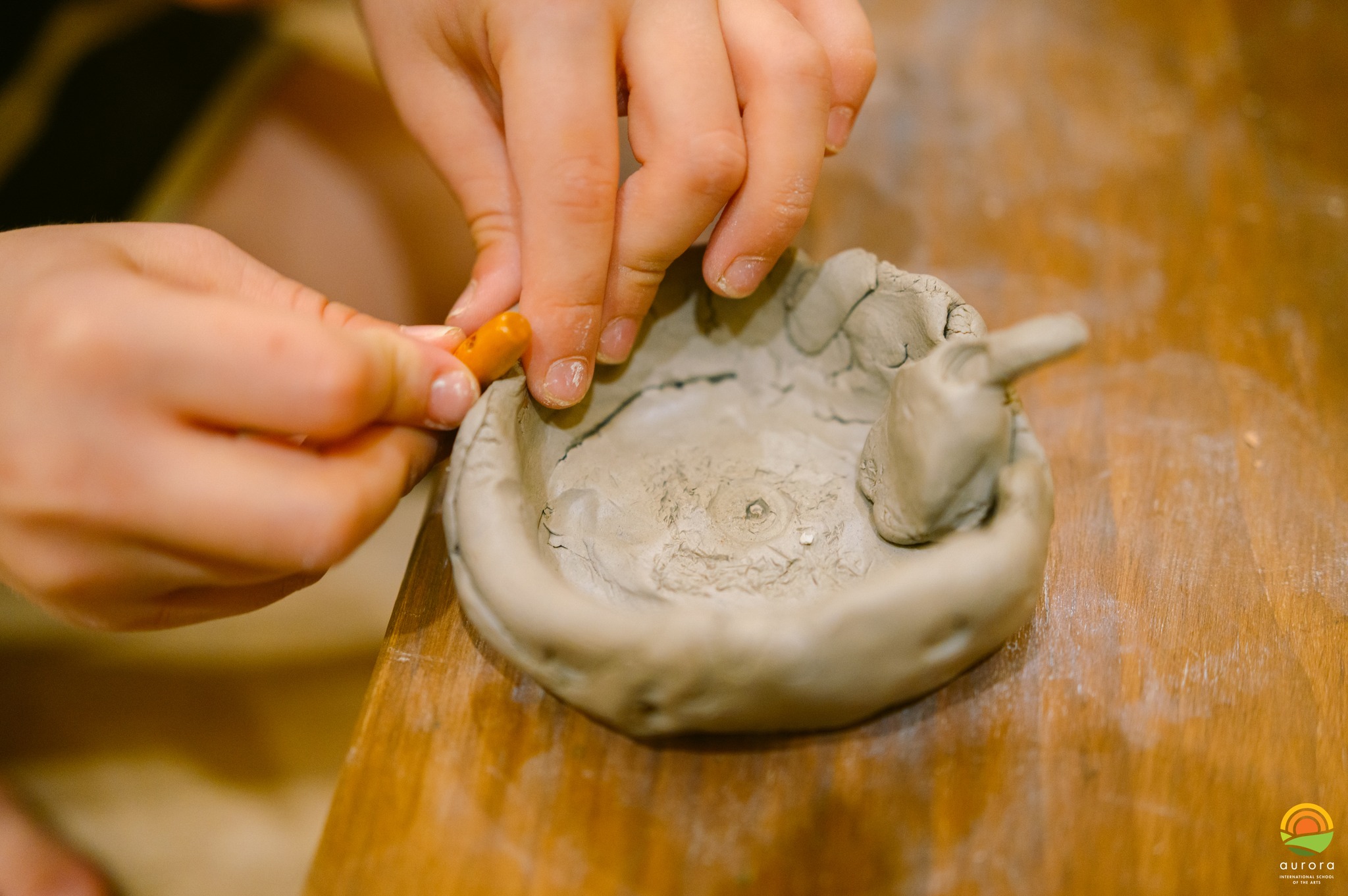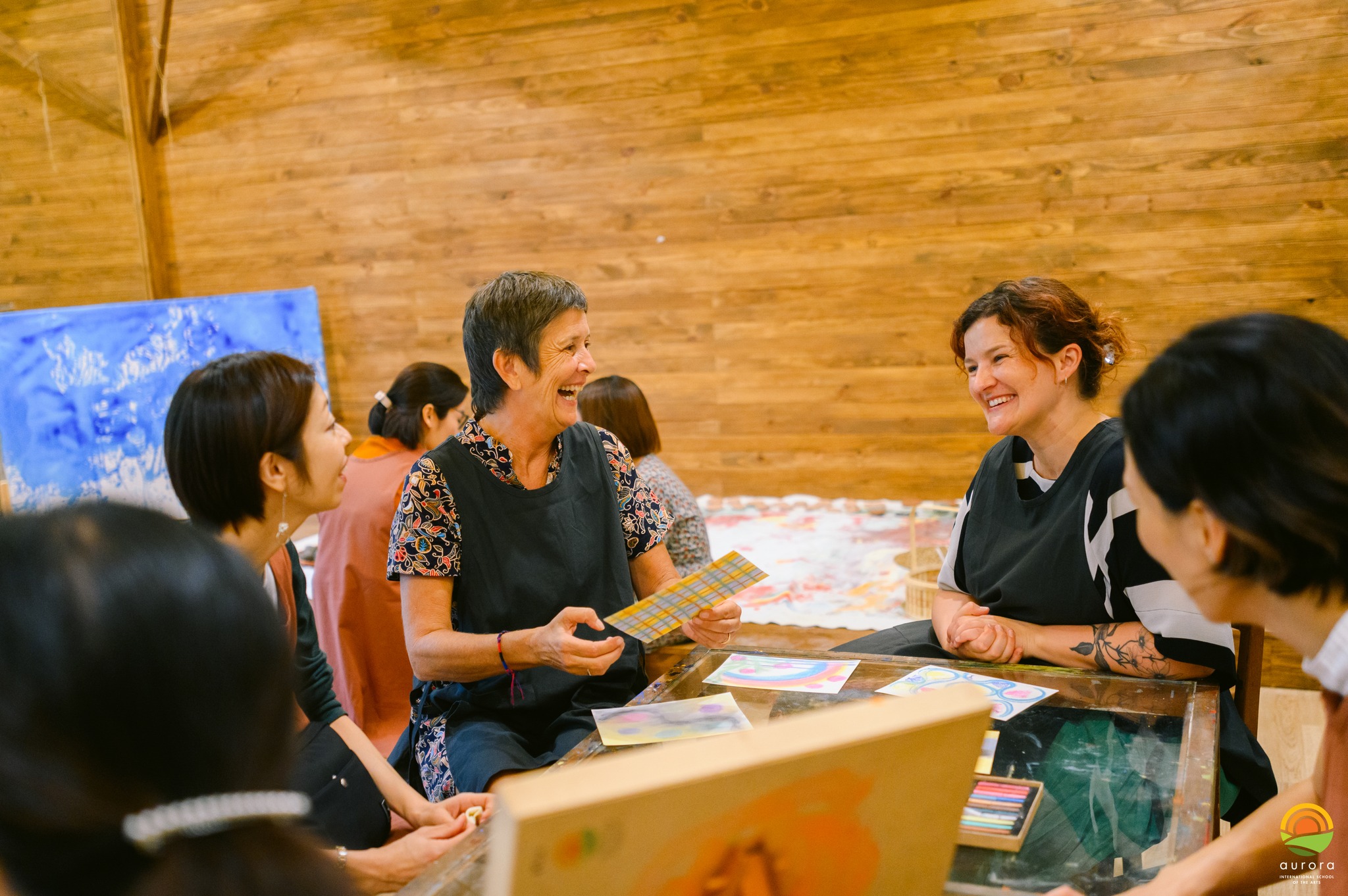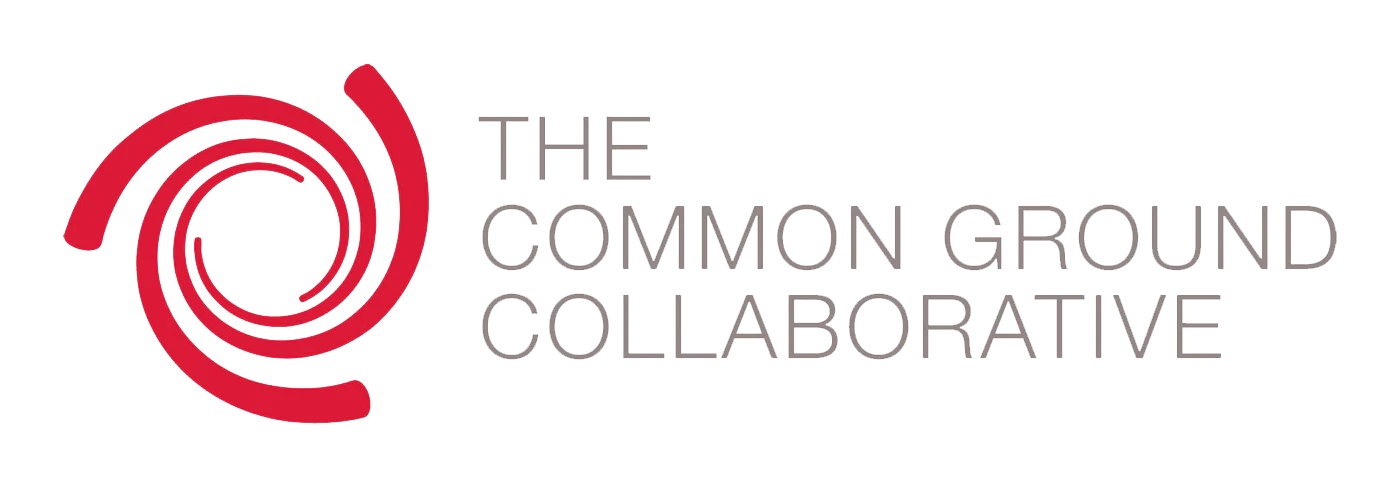“Be a child again” was a chance to connect parents with children and school, to understand more about how children encounter materials and how parents can support children in their journey of learning and exploring this world.
To share how we invite our children to encounter materials we created four areas for families to explore:
– Clay: Clay is a wonderful natural material that is sustainable, beautiful, and connected to craft traditions around the world. With our school project being Dialogue with Place we asked the families to join our inquiry by contributing to a mosaic installation we are creating.
– Chalk pastels: Chalk pastels appeal to children and adults because of their deep and subtle colors and gentle textures. Rather than drawing a picture we asked the families to explore the pastels on paper. What different techniques could be found to manipulate the colors and marks? Beautiful shades of colour were discovered.
– Wire: Wire is a glorious material to manipulate. The way the light reflects off the metal adds to its beauty and potential for children’s learning. We encouraged the families to experiment with the texture and movement in the wire.
– Loose parts: We chose natural and recycled loose parts for sustainability and because our children experience these every day at school. We knew that this encounter would perhaps be a challenge for the families, but once they realized there was no ‘right or wrong’ we noticed an excited buzz. Loose parts foster problem-solving, co-operation and creativity, the possibilities are infinite!
Throughout the workshop we noticed the parents collaborating and talking together when engaging and exploring the materials. Just how our children at school do. Children are incredible at thinking abstractly and creatively. For adults, it can be harder! For example, with the water hyacinth, parents had the mind set of weaving and they started to weave immediately when seeing it, meanwhile, children are open to other possibilities. They see available materials in beautiful fresh ways, through the eyes of the child.

